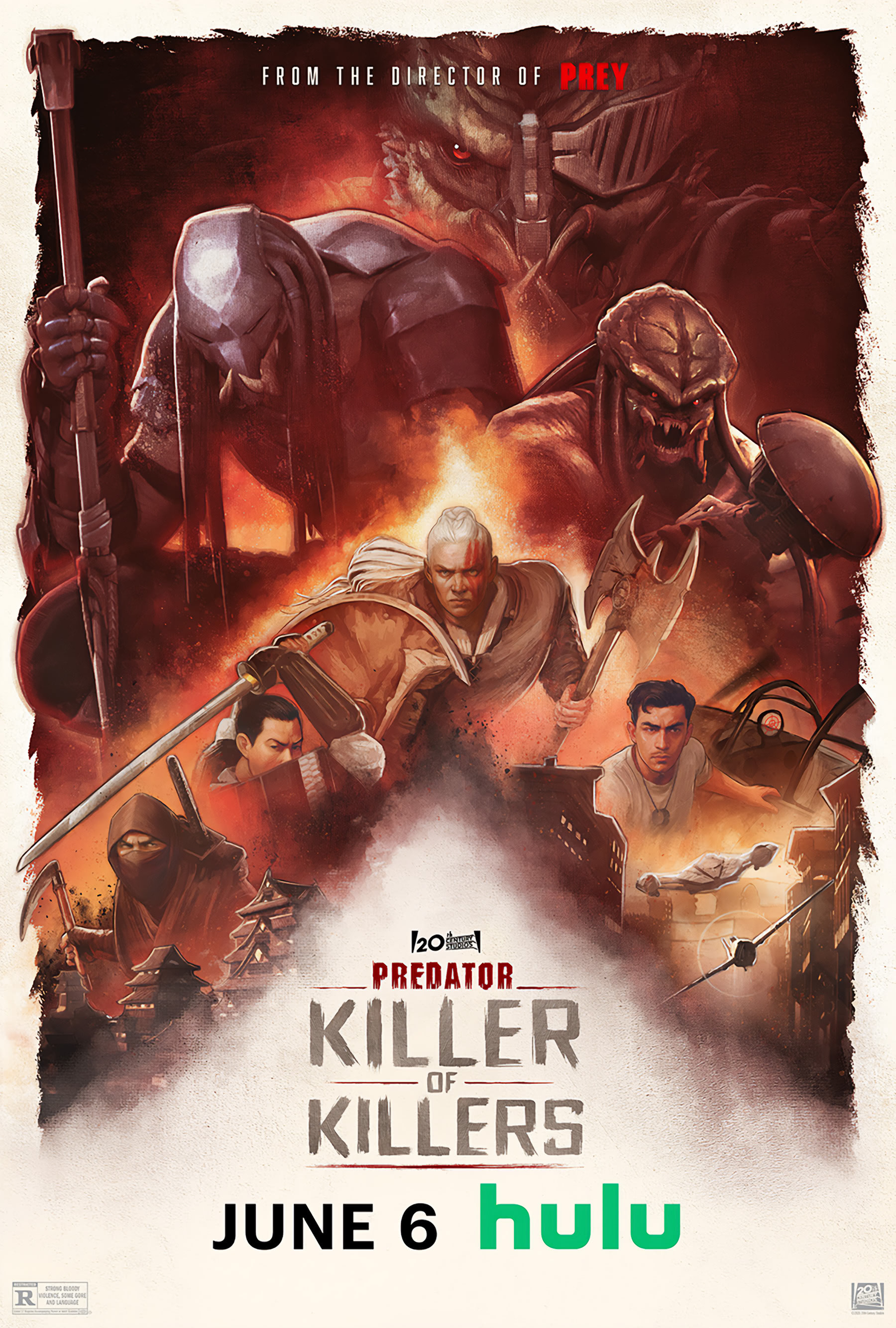Entertainment
Christina Milian isn’t bothered by lack of credit on Jennifer Lopez’s ‘Play’: ‘She’s an icon’

Christina Milian isn’t bothered by her lack of vocal credit on Jennifer Lopez’s “Play,” a song Milian co-wrote and originally recorded.
In an interview published Monday, the singer and actor recounted her experience penning and performing the pop tune before Lopez’s team set their sights on it. She also dispelled the idea that she might feel slighted because she was not credited as featured artist on the track, despite contributing some vocals to the final version.
“Hands down, [Lopez] killed it,” Milian told Page Six. “She’s so good. I love that song. … And I couldn’t believe at 19 years old I wrote a song for J.Lo.”
Milian told Page Six that she wrote “Play” in about 15 minutes around the same time she was working on her first single, “AM to PM,” and eponymous debut album, which came out in 2001. Though the “Resort to Love” and “Man of the House” star was proud of “Play,” she had a feeling that her record label wouldn’t want two “party songs” on the LP, and she was inclined to choose “AM to PM” instead, according to Page Six.
Before Milian made the final decision, however, a Sony music exec listened to “Play” and snagged it for Lopez, the outlet reported. But Milian was still brought on for rewrites, and her voice can be heard in the chorus.
“It’s funny when people talk about this being kind of a thing about me singing on the song with Jennifer. I mean, I have background singers on some of my songs,” Milian said.
“It’s no different than Michael Jackson having background singers on songs, or Britney Spears,” she added. “This is what music is made of. You want a blend of voices. It makes songs better, to me.”
Milian is credited as a co-writer on the track, along with Anders Bagge, Arnthor Birgisson and Cory Rooney.
“I don’t need a feature credit,” she said. “I’m also just so happy that she did it because she’s an icon, she’s amazing.”

Movie Reviews
Predator: Killer of Killers (2025) Movie Review | FlickDirect

For almost 40 years, fans of science fiction/action movies have gravitated towards the Predator franchise. Beginning in 1987, when the Jim and John Thomas (Behind Enemy Lines) penned film about an extra-terrestrial, humanoid hunter who stalked humans in the jungle first appeared in theaters, the masses have been drawn to it. The success of the original movie spawned comic books, novels, video games, and four additional films, with two more on the way this year. While the latter movie, entitled Predator: Badlands, will hit theaters in November, the first of the two films is an adult, animated, stand-alone piece coming to Hulu in the United States and internationally on Disney+ beginning on .
Predator: Killer of Killers is broken into three separate vignettes set in different locations and during different time frames. The first story deals with a female, Nordic Viking, and her army set out to find the man who murdered her father so she can get revenge. However, unbeknownst to them, a creature lurks in the shadows, watching and waiting. Once he pounces, her whole team, including her son, are dead, and she is enslaved.
Story number two involves two brothers somewhere in an ancient Asian country. As their father pits brother against brother, one lays down his sword while the other attacks, winning his father’s praise. The loser of the battle runs away from the kingdom, only to return 20 years later to confront his sibling. Little did they know they would need to team up to defeat the unknown entity trying to kill them.
Finally, the last vignette includes a young American man being drafted during World War II. His dream is to be a pilot, but he is relegated to mechanic. When he is handed a weapon from the alien being, he tries to figure out what it is, and when he does, he takes to the sky in an old fighter plane to warn the other pilots that what they are fighting against is not human. Ultimately, the three “survivors” end up on a different planet and are forced to fight each other, but when they team up, they end up fighting the predators instead.
Writer/director Dan Trachtenberg, who brought us 2022’s Prey, once again helms this feature film, and he does so beautifully. His take on the alien creatures gives audiences a unique story brought to life in a different way than any of the other Predator movies. He includes plenty of blood splatter and gore, but also presents the Predators as intelligent and scheming.
I will admit I’m not a huge fan of the “watercolor”-like technique used in the animation, as it blurs the lines, making the picture perhaps not as sharp and clean as it could be. While this tends to add a bit of softness to an otherwise cold and hard movie, it seems somewhat out of place with the harshness of the plot. It isn’t an anime style of animation, but it seems to be in the same family.
Predator: Killer of Killers remains solidly within the realm of the other Predator films, which makes it familiar without getting mundane. It skirts the edge of the forest while venturing down a less-traveled path, making it recognizable and different all at the same time. As an audience, we become invested in these characters, which makes the film enjoyable.
In the world of Predator, this movie stays true to the source material but gives us something we didn’t know we needed. It is a nice intermezzo between Prey and Predator: Badlands and whets our appetites for more.
Grade: A-
Entertainment
Belinda cannot be tamed. Her latest album, 'Indómita,' proves it

There is no containing a star of Belinda’s caliber.
In the making of her fifth studio album “Indómita,” the Mexican singer and actor began to understand that what made her hard to contain — in life, in love and in her career — was worth writing an album about.
“I was reading a book and all of a sudden the word ‘indómita’ appeared,” says Belinda in an audio call from her home in Mexico City. “For two days, I kept dreaming of that word. ‘Indómita, Indómita,’” says Belinda during a recent audio call from her home in Mexico City.
Out on June 5, “Indómita” is an assortment of corridos tumbados, reggaeton, rock and pop ballads with exciting collaborations — ranging from the American rock band Thirty Seconds to Mars to Latin stars like Tokischa and Tito Double P.
“This album is very special, not just for women but for everyone who feels untameable, who feels strong, who feels like a warrior,” she explains.
The title directly translates to indomitable, or untameable, a term that seems to perfectly suit the 35-year-old artist, whose long and prosperous career made her an international household name.
Born in Madrid, Spain, as Belinda Peregrín Schüll, but known widely by her mononym, Belinda began her legacy in Mexican television, taking on lead roles in early 2000’s childhood telenovelas like “Amigos x siempre,” “Aventuras en el tiempo,” and “Cómplices Al Rescate,” where she played a set of twins who has been separated at birth. She also broke through the Disney sphere, appearing in the popular 2006 sequel of “The Cheetah Girls 2” as Marisol, a Spanish pop star and competitor of the titular girl band.
Belinda’s music career has been equally as fruitful, including a stint as a singing coach on the TV competition “La Voz” and dozens of hit singles, such as the popular “Amor a Primera Vista,” a 2020 collaboration with Los Ángeles Azules and Lalo Ebratt. Her previous studio albums, 2003’s “Belinda,” 2006’s “Utopía,” 2010’s “Carpe Diem” and 2013’s “Catarsis” have all graced Billboard’s Top Latin Albums chart.
Her new LP marks a personal artistic triumph for the artist, given its unique regional Mexican edge. “300 Noches,” her 2024 corrido track with Natanael Cano, made No. 4 on the Mexican Billboard pop chart and appeared on the Billboard Global 200, making it Belinda’s first appearance on the chart. Other corridos tumbados, like the rugged “La Cuadrada” featuring Tito Double P and the blistering “Mírame Feliz” with Xavi, unleash a new alter ego of the famed singer known as “Beli bélica,” the latter of which means “warrior” in Spanish.
“With this album, I’d like to open up the door to more women to sing corridos tumbados of heartache,” says Belinda.
The record is already scorching hot, with songs like “Cactus” making a subtle, prickly nod to her past relationship with Mexican crooner Christian Nodal, who famously tattooed her eyes on his chest. There’s also the reggaeton-corrido fusion called “La Mala,” which coyly addresses the rumors that Belinda is a cold, calculated lover — which heightened in the wake of her high-profile relationship.

Still, her notoriety as a heartbreaker has simultaneously granted her sainthood status from fans, who created fake prayer cards of the enchanting star to bolster their own love life.
“This album was made up of things that we live every day,” says Belinda. “Someone breaks our heart, we feel better, we fall in love, they break our heart again and so forth. Life is like that.”
But “Indómita” is much more than Belinda’s foray into regional Mexican music; there’s also “Jackpot,” a dazzling club alongside Kenia Os, a tribute to lightning-fast cars in “Rayo McQueen” — and even her love of anime in “Death Note.”
“I’m a versatile artist and this record reflects that,” says Belinda.
This interview has been edited and shortened for clarity.
What motivated you to release this album over a decade after your last one, “Catarsis”?
I know it might seem like it’s been a long time, but I never left. I’ve always been involved in music. I’ve done collaborations with Los Ángeles Azules, “Amor a Primera Vista,” that was super popular, with Ana Mena in “Las 12,” Lola Indigo and Tiny in “La Niña de la Escuela,” with Juan Magán and Lapiz Conciente in “Si No Te Quisiera.”
I’ve made a lot of music, but obviously this record means so much to me. It’s not the same to work on collaborations and music for other artists as it is to do it for myself. The album is full of collaborations with Thirty Seconds to Mars, who are one of my favorite bands of all time. It also has Kenia Os, Tito Double P, Neton Vega, who’s a hard-hitting act in the world of reggaeton and corridos tumbados, and Natanael Cano, who I can’t forget either. It’s a complete album, with lots of different styles.
Many of the songs on this album are corridos tumbados. Why did you dive into that style of music?
It’s a really stigmatized genre, and a genre that is specifically for men and for certain kinds of lyrics. I wanted to break that [idea] and say that instruments used — like the trombone, the alto horn, tololoche — aren’t just for men or for specific lyrics or a specific market. There can be more romantic lyrics, a mixing of sounds like pop with urban music. The challenge was also getting my collaborators to believe in this too, since they are used to other topics, but everyone trusted me and believed in the song[s] since the beginning and it was organic.
Tell me more about your collaborations. What did you learn from them and what did you teach them?
They’re so talented and play instruments very well, especially Natanael Cano — you can tell him to play any instrument. He’s very talented. We were in the studio and he started to play a Metallica song and I was like, “Wow!” Although we might pigeonhole them into this genre, they’re very versatile and talented. I admire them.
One of the singles of this album, “Cactus,” talks about your feelings toward an ex. How did it feel to release your emotions? And would you say that it helped you heal, as the song suggests?
I love healing through music. The first phrase of the song goes: “Therapy helps, but music heals more bad-ass.” Perhaps I couldn’t express with words what I can through music. As a composer we express our emotions through our lyrics. But it’s also important that people remember that not everything is based on experiences. It’s music so that people can identify themselves in love or heartache. I never mention anyone by name, but people can make their own conclusions or deductions. At the end of the day, I make music for people who can relate to the lyrics.
You’ve been in the spotlight for so many years. Do you believe there are two Belindas that exist? As in, one that is for the public and one that’s just for close family members?
Of course, I can guarantee it. There’s also a song where I express that idea that many times people have categorized me as a bad character, “La Mala.” At the end of the day, I know who I am and the people around me know the heart that I have — my feelings and intentions, my day-to-day. That’s what counts for me. If I paid attention to every comment [people made of me], my God, I’d be locked up in a room without an exit, which sometimes does happen to me.

How do you tune out those outside critics?
I try not to see these things. Sometimes it’s inevitable but I’m also not going deep into the web to find what people are saying. I do other more productive things that nourish me.
Obviously it hurts, because even if certain comments are not true, they still hurt because they carry negative energy. I don’t want to give into these comments as truth, but that energy of negativity or insult or humiliation or anything that comes from a negative side, obviously has a consequence. So one has to be careful about how they express themselves, because there’s so much negativity that exists, so it would be nice if we could just throw a bit more of love.
I heard you’re a big anime fan, and you show that in your song “Death Note.” Why was it important to include that?
I’m [an] otaku, even if people don’t believe it. I really like anime. I’m a fan of “One Piece,” “Death Note,” everything, “Attack on Titan,” but “Death Note” is my favorite. It’s pretty dark, but Ryuk is one of my favorite characters in life. I’ve always been a fan of terror, because within the darkness, there’s always some light.
You were born in Spain but were raised in Mexico. How have you navigated both identities?
I can’t pick one or the other, but I’ve always considered myself Mexican, because I was raised in Mexico and my accent is Mexican. I’m very, very much Latina.
What advice would you give your younger self?
Don’t take everything so personally and enjoy life. When I was little, I would think too much about what the world thought. I was always like, “do you like it? Oh you don’t, why?” and I would suffer. And now if I like it, OK, and if no one else likes it, then too bad, I like it!
Movie Reviews
Thug Life Movie Review and Release Live Updates: Kamal Haasan-STR starrer nears release as buzz builds around high-octane first half – The Times of India

The Times Of India |
Jun 05, 2025 , 07:45:54 IST
-

 Politics1 week ago
Politics1 week agoTrump admin asking federal agencies to cancel remaining Harvard contracts
-

 Culture1 week ago
Culture1 week agoCan You Match These Canadian Novels to Their Locations?
-

 Technology1 week ago
Technology1 week agoThe Browser Company explains why it stopped developing Arc
-

 News1 week ago
News1 week agoHarvard's president speaks out against Trump. And, an analysis of DEI job losses
-

 News1 week ago
News1 week agoRead the Trump Administration Letter About Harvard Contracts
-

 News7 days ago
News7 days agoVideo: Faizan Zaki Wins Spelling Bee
-

 World1 week ago
World1 week agoDrone war, ground offensive continue despite new Russia-Ukraine peace push
-

 Politics5 days ago
Politics5 days agoMichelle Obama facing backlash over claim about women's reproductive health














